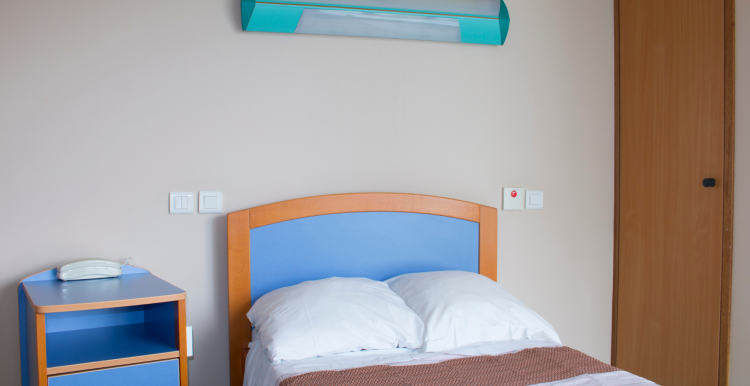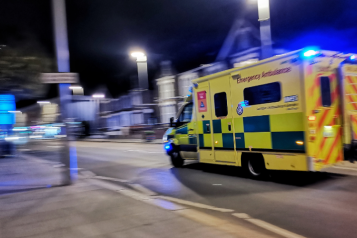Safety concerns raised after inspection of acute psychiatric wards and psychiatric intensive care units

Avon and Wiltshire Mental Health Partnership NHS Trust (AWP) provides 9 acute wards and 3 psychiatric intensive care units (PICU) for adults of working age. At this inspection, the Care Quality Commission (CQC) visited eight wards, including:
- Cherry ward, an acute, mixed-sex ward at Callington Road Hospital, Bristol
- Hazel ward, a male PICU at Callington Road, Bristol
- Elizabeth Casson House, a female PICU at Callington Road Hospital, Bristol
- Oakwood ward, an acute, mixed-sex ward at Southmead Hospital, South Gloucestershire
- Juniper ward, an acute, mixed-sex ward at Weston General Hospital (Longfox unit), North Somerset
Inspectors carried out this unannounced, focused inspection in January 2023 because they received information that raised concerns about the safety and quality of the services. They assessed the services in two areas. The current ratings following this inspection (and the rating at the previous inspection) are:
- Are the services safe? Inadequate (down one rating from requires improvement)
- Are the services well-led? Requires improvement (no change)
The overall rating for this service is requires improvement (no change). The rating for Avon and Wiltshire Mental Health Partnership (AWP) as a whole is also requires improvement.
Following the inspection, the CQC issued a Warning Notice due to concerns that patients on the acute inpatient wards were not receiving safe care and treatment.
You can download a full copy of the report below.
Downloads
Key findings
The key findings from this inspection included:
- Staff did not always report or respond to patient safety incidents.
- Not all wards appeared clean and some were poorly furnished and in need of repair.
- There were high vacancy rates and staff felt they could not always provide the level of care they wanted to due to these vacancies.
- Compliance with physical emergency response training was below 75% on 6 of the wards.
- Staff did not consistently follow processes related to leave for patients detained under the Mental Health Act.
- Staff did not always feel respected, supported and valued in their roles
- The identification, management, and review of risk, issues and performance was not always sufficiently implemented to provide assurance of a safe and quality service.
Is the service safe?
Inspectors identified ligature anchor points and environmental risks on all inpatient wards. There had been two patient deaths on the acute wards in 2022 - both had involved the use of a ligature. One of these had involved the use of a fixed ligature point. Individual patient risk management plans were mostly generic, did not refer to environmental risks, and were not updated according to identified risks.
The trust and ward staff had not ensured that mixed sex wards were laid out, utilised, and monitored to mitigate associated risks and prevent sexual safety incidents. Staff did not sufficiently monitor and observe single sex spaces. Male and female corridors were unlocked and accessible to any patient or staff.
In the last 12 months there had been 111 incidents involving 'sexual abuse' or 'sexually inappropriate behaviour' across the 9 acute inpatient wards. 2 of these were categorised as serious incidents. Inspectors also noted blind spots in the ward environments on Elizabeth Casson House, Oakwood, Juniper and Cherry wards, without mirrors or CCTV to mitigate the associated risks.
A patient on Oakwood ward had informed staff that they did not feel safe around some other patients in communal areas. The patient was involved in a physical altercation with 2 patients and it was later found that they had acted to protect themselves as staff had not been available to support them. On Elizabeth Casson House we observed a patient becoming distressed in a communal area. Staff were not within the communal area and did not respond to the patient until an inspector brought this to their attention.
Oakwood ward was poorly maintained and there was damage throughout the ward, including stains and damages to walls. Although Juniper ward was mostly clean, we found that some areas of the ward were not, including the de-escalation area and clinic room, and there were stains and damage to furniture.
Inspectors also identified issues with seclusions rooms on some wards, including a door that was not robust enough (Juniper), limited space for de-escalation of a patient (Cherry), the door and ensuite (Oakwood), and a blind that was broken and closed (Juniper). Staff did not always check, maintain, and clean equipment. Some medication was out of date.
There were high levels of vacancies across all wards. Some staff felt there was not always enough staff on the wards to provide the level of care they wanted to e.g. areas of the ward being locked off due to inability to supervise these, a lack of activities being provided and not enough staff to manage patient safety incidents.
Staff did not always complete risk assessments for patients on admission, or update these in response to new risks and following safety incidents. This included risks such as increased suicidal ideation, violence and aggression, safeguarding concerns, patients absent without leave, and sexual safety incidents or disinhibition. Incidents of potential financial abuse between patients were also identified, and staff were not always aware that a patient's leave had been suspended.
Is the service well-led?
Leaders had a good understanding of the services they managed and the current challenges they faced. Ward managers and matrons took action to respond to challenges for their wards but did not always feel that timely or effective action was taken when concerns were escalated to more senior managers or other divisions within the trust. Staff did not always feel respected, supported and valued.
Concerns were varied across wards but included; permanent staff being rude and unsupportive to agency staff, bed managers and duty managers overruling ward staff clinical decisions to refuse admissions, and a lack of understanding or response to the challenges and stress faced by ward staff.
Staff and leaders on all wards told us that repairs and improvements to the ward environments were delayed or difficult to arrange due to a lack of funds. Ward staff told us that there were financial pressures within the trust that compromised quality of care.
There was a trust sexual safety improvement project underway but this was in its infancy and staff had a limited understanding of the project and their role in it. Some staff and managers were unaware of the serious sexual safety incidents that had occurred elsewhere in the trust and the initial learning from these.
Areas for improvement
Action the trust MUST take to improve:
- The trust must ensure that staff complete risk assessments for all patients and that these are regularly reviewed and updated.
- The trust must ensure that staff develop plans to manage identified individual patients risks and that these are reviewed and updates in response to changing needs and newly identified risks.
- The trust must ensure that staff follow processes for section 17 leave in line with the Mental Health Act.
- The trust must ensure that ward teams do all that is reasonably practicable to monitor and remove or mitigate environmental risks on all wards.
- The trust must ensure that the mixed sex ward environments are designed, utilised, and monitored to mitigate associated risks and prevent sexual safety incidents.
- The trust must ensure that staff follow policies and procedures to ensure the proper and safe management of medicines and maintenance of clinic room equipment.
- The trust must ensure that staff prescribe, administer and review the use of pre re nata (PRN) medicines in line with national guidelines to ensure this is used safely and effectively.
- The trust must ensure that staff receive necessary training to keep patients safe, and respond to identified risks. This must include compliance with physical emergency response mandatory training (PERT), and training in engagement and observation policy and process.
- The trust must ensure processes are in place to ensure risk and performance is monitored and action taken to improve the quality and safety of care. This must include the review of risk registers, and environmental audit tools, and timely action is taken where the quality or safety of care is compromised.
- The trust must ensure that processes are in place to respond to and communicate the findings of reviews and reports about the quality and safety of the service. This must include the implementation of learning and action plans following investigation of safety incidents.
Action the trust should take to improve:
- The trust should ensure that there are sufficient numbers of suitably qualified, competent, skilled and experienced staff on all wards. The trust should also ensure those staff have access to information systems, including care records and incident reporting.
- The trust should ensure that staff take action and document their response to safeguarding advice received from the trust leads.
Have you or a loved one been cared for on an acute psychiatric ward or PICU? Please tell us about your experience by clicking the pink 'Talk to us' button below and completing our online feedback form.


